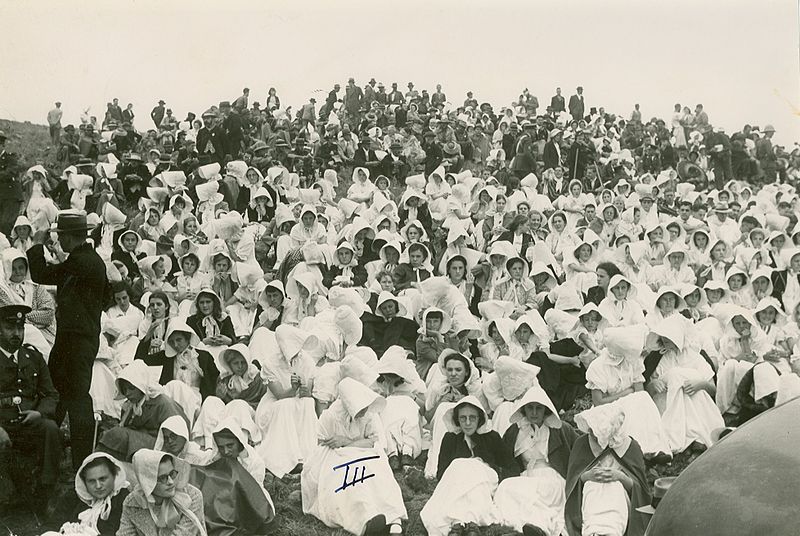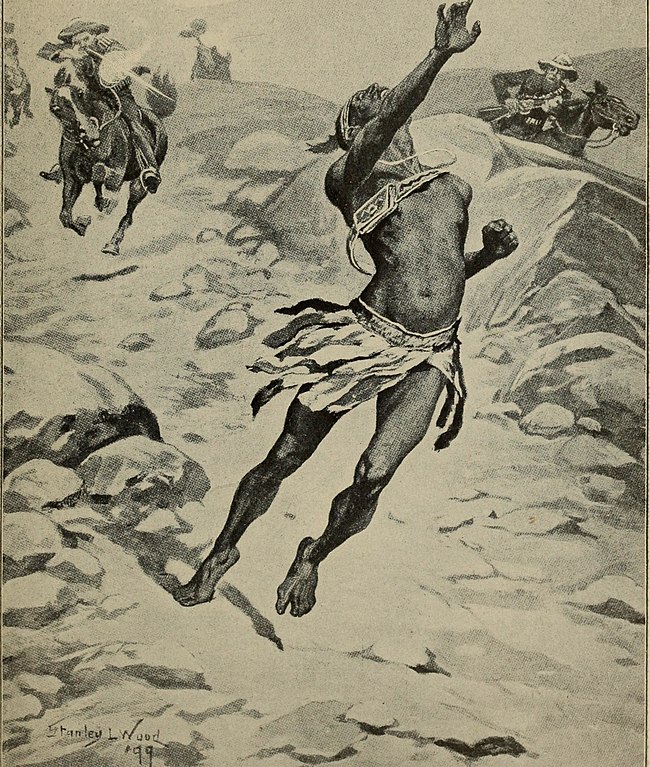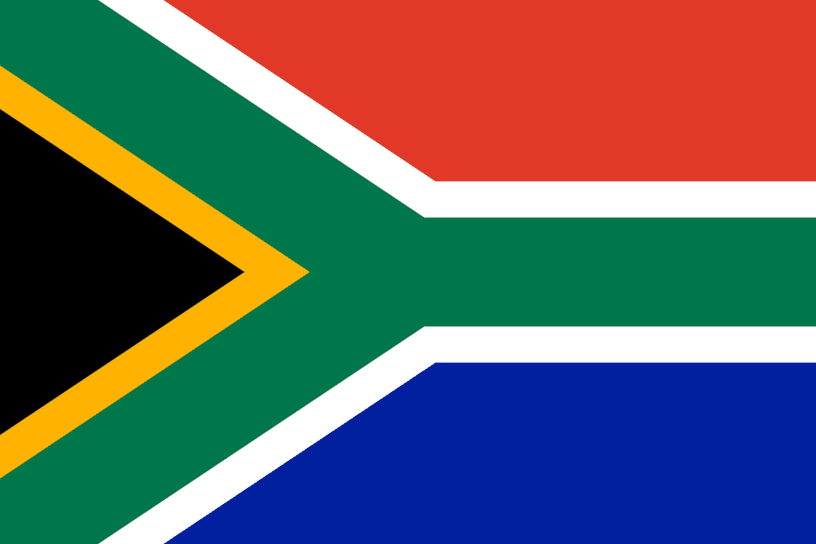
Image by Sharon Ang from Pixabay
A Brief History of South Africa
Some 2 000 years ago, the Khoekhoen (the Hottentots of early European terminology) were pastoralists who had settled mostly along the southern Africa coast, while the San (the Bushmen) were huntergatherers spread across the region. At this time, Bantu-speaking agropastoralists began arriving in southern Africa.
One legacy that all African countries share is colonization. From the 15th century onwards, most of the countries in Africa have been colonised by the European world powers, Great Britain, France, Portugal, Germany, Spain, Italy and Belgium. South Africa was officially colonised in 1652. Apart from the European colonisation being executed from the south of the continent, South Africa also experienced a migration and invasion of people groups from the north. The first European settlement in southern Africa was established by the Dutch East India Company in Table Bay (Cape Town) in 1652. Created to supply passing ships with fresh produce, the colony grew rapidly as Dutch farmers settled to grow crops
In 1795 the British captured Cape Colony (South Africa) then handed it back to the Dutch in 1803 but took it again in 1806. In 1814 a treaty confirmed British ownership of Cape Colony. In 1812 the British founded Grahamstown and in 1820 4,000 Britons were granted land by the Great Fish River. Upon formation, the country was named the Union of South Africa in English and Unie van Zuid-Afrika in Dutch, reflecting its origin from the unification of four formerly separate British colonies. South Africa is a biodiversity hotspot, with unique biomes, plant and animal life. With over 60 million people, the country is the world’s 23rd-most populous nation. The Western Cape offers beaches, lush winelands around Stellenbosch and Paarl, craggy cliffs at the Cape of Good Hope, forest and lagoons along the Garden Route, and the city of Cape Town, beneath flat-topped Table Mountain.
The First Peoples of SA

Image by Samuel Daniell from Wikimedia
The San were South Africa’s first people. Between 200 000 and 100 000 years ago, modern humans began to evolve throughout Africa – including South Africa. They became the San, who later met up with south-bound Khoi pastoralists from the north. Together the Khoi and the San people of South Africa are often called the “Khoisan“, a term that has been used to describe their broad similarity in cultural and biological origins. It is derived from the names “Khoi” and “San”. They are the first known inhabitants of South Africa, believed to have emerged from the same gene pools as the black people, but to have developed separately. They were resident in the country for thousands of years before its written history began with the arrival of the first European seafarers. The KhoiSan drifted down into the Western Cape at about the same time (300AD) that early Iron Age groups crossed the Limpopo – whose descendants, about 1 000 years later, formed the African kingdom of Mapungubwe and began to trade with India, Arabia and China.
Settlement of the Black People in South Africa

Image by Ron Porter from Pixabay
The black people in South Africa arrived in the country from A.D. 300 onward, during the Southern Migration. Today they consist of 9 different nations or ethnic groups, representing the vast majority of the population in South Africa. They are divided into 4 language groups, of which the Nguni speaking people form a major part. Other main language groups in South Africa are the Sotho, the Venda and the Shangaan-Tsonga. While the Xhosa tribes migrated to the Transkei and the Ciskei, other Nguni tribes such as the Zulu, chose to remain in Natal. In 1806, there were a large number of tribes in the area and there were four important and well-known ones. The Zulu tribe which, during the early nineteenth century, was only a small tribe, had settled between the Umhlatuse and the Umfolozi Rivers. The tribe’s first leader was Malandela and the tribe was named after his son Zulu. The Mtethwa tribe lived east of the Zulu and was a strong tribe under a strong leader called Dingiswayo. The Qwabe tribe lived south of the Mtethwa and its first leader was called Phakatwayo. The Ndandwe tribe was also powerful and its first leader was named Zwide. The Ndandwe lived north of the Mtethwa.
Early European Settlers

Image by Unknown author from Wikimedia
A century and a half had gone by since the visit of Vasco da Gama, when Dutch explorer Jan van Riebeeck arrived in Table Bay with his small fleet of 3 ships on the 6th of April 1652. He was tasked with setting up a supply station for the Dutch East India Company (V.O.C.) an important stop both geographically and politically, as it was on the only early trade route from Europe and the Americas to India, the ‘Spice Islands’ of the East Indies, and the East. Over the next 200 years, various waves of other European and Indian settlers also arrived. Initially, the V.O.C. had no intention of colonizing the Cape. They changed their mind however when granting nine company servants their freedom in 1657 together with dispensation to set up private farms in the Rondebosch region at the foot of Table Mountain. Following the Napoleonic wars, Britain was experiencing a serious unemployment problem.
Lord Somerset, British governor in South Africa, saw this as an opportunity to entice British immigrants to the Cape. He thought that the increased manpower in the cape colony would also help to maintain peace on the border between the Fish and Sundays Rivers. With an increase in British settlers there was widespread unsettling among Afrikaners who felt that, since the churches and schools were rapidly being anglicized, their language was in danger of becoming extinct. As a result, many farmers left the eastern border in an attempt to establish independent states in the interior. This move was later referred to as the Great Trek a historical event that, together with the Mfecane, greatly determined the shape and structure of the South Africa of the future.
Mfecane- the Scattering

Image by Internet Archive Book Images from Wikimedia
This was also the start of the Mfecane (‘the scattering, the crushing’) of Africans that began in Zululand, crossed the Drakensberg and swept through the present Free State province. Spurred on by the Zulu warrior king Shaka’s growing militarism, it became a confusing maelstrom of movement and massacre. The “Mfecane / Difaqane” war forever changed the settlement patterns and ethnic structure of the African population of the area. Whole communities of people were displaced in their flight from larger warring tribes. The winning tribes would often incorporate the losers into their tribes. Adding the land-hungry Voortrekkers and the newly arrived 1820 British Settlers into this mix brought further conflict. The rise of the Zulu people under their King Shaka Zulu during the “Mfecane / Difaqane” war was one of the most significant historical occurrences in the early history of South Africa. The term Mfecane (Nguni languages) means “destroyed in total war”. The Sotho speaking people on the highveld used the term Difaqane, which means “hammering” or “forced migration/removal”.
The Mfecane had a great influence on the history of South Africa. Large parts of the country in Natal, the Transvaal and Free State were largely depopulated because people fled in droves to safer areas such as the Transkei, the edge of the Kalahari, the Soutpansberg and the present day Lesotho. In consequence, these areas could not cope with the sudden influx and became overpopulated. After the Mfecane, the whites took advantage of this situation by moving into the empty areas and in this way the ethnic map of South Africa was changed completely. Many people died during the Mfecane. Violence and starvation were rampant, because the livestock was stolen and people could not stay long enough in one place to cultivate crops. Although hundreds of thousands of people lost their lives, it also gave rise to the formation of big new nations such as the Sotho. The tribes of leaders such as Dingane, Shaka Zulu, Mzilikazi and Soshangane were significantly strengthened and changed.
Discovery of Gold and Diamonds in South Africa

The big hole in Kimberly. Image by Hansm from Wikimedia
The late 1800s saw the discovery of South Africa’s immense gold and diamond wealth and later, the great platinum finds. With the discovery of gold and diamonds in South Africa, industrialization in the country started in earnest, changing the course of its history dramatically. In 1867, diamonds were discovered at Hopetown and in 1871, more diamonds were discovered in the vicinity of Kimberley. A company, “De Beers Consolidated Mines” was established under the leadership of Cecil John Rhodes the company is still in existence today. More towns, such as Koffiefontein and Jagersfontein, started up as a result of a concentration of diamond diggers in certain areas. When gold was discovered in the eastern Transvaal (Pilgrim’s Rest, Mac-Mac Waterfalls and Barberton) a similar process took place.
New towns were established to accommodate the huge influx of people. Mining magnates such as Cecil John Rhodes and Barney Barnato, who both had interests in the diamond industry, also became involved in the mining of gold. The wealth they had accumulated at Kimberley was used to establish large mining companies. Many farmers, who came to seek their fortune in Johannesburg after a severe drought had driven them off their farms, became even poorer as the divide between rich and poor increased. A group of people, the so-called “Poor Whites,” lived in shacks and depended on welfare organisations to support them. The black people, who had left their traditional homes, had similar problems. Many of them became detribalised and struggled to adjust because of the differences between their traditional culture and European culture. The Transvalers with their Christian, conservative views also found it difficult to adjust to a lifestyle that was, in their view, immoral.
The Anglo Boer War

Image by Lamiot from Wikimedia
With the discovery of gold in Transvaal, thousands of British and other prospectors and settlers streamed over the border from the Cape Colony and from across the globe. The Afrikaner boer population of the Transvaal republic became nervous and resentful about the presence of all these “uitlanders” (foreigners). Feeling threatened they denied them voting rights and taxed the gold industry heavily. In response, there was pressure from the “uitlanders” (foreigners) and the British mine owners to overthrow the Boer government. In 1895, well known mine magnate Cecil Rhodes sponsored a failed coup d’état backed by an armed incursion, an action known as “the Jameson Raid”. War was inevitable, President Paul Kruger of the Transvaal Republic, simultaneously issued his own ultimatum prior to receiving Chamberlain’s.
The ultimatum gave the British 48 hours to withdraw all their troops from the border of Transvaal; otherwise the Transvaal, allied with the Orange Free State, would be at war with them. British colonial leaders favored annexation of the Boer republics and in September 1899 British Colonial Secretary Joseph Chamberlain sent an ultimatum demanding full equality for British citizens resident in Transvaal. The 20th century saw the end of the South African War (also known as the Second Anglo-Boer War), which was fought from 1899 to 1902, the establishment of the Union of South Africa in 1910; the involvement in World War I and World War II on the side of the Allies; a narrow victory for the mostly Afrikaner National Party in 1948; and, in the years to come, the formulation of apartheid.
Apartheid

Image by Earnest Cole from Wikimedia
Apartheid was a nearly 50-year period of institutionalised racism and the suppression of non-whites, during which the African National Congress was banned and its leaders, including Nelson Mandela, banished to prison on Robben Island. The Anglo/Boer wars ended in defeat by the “Boers” at the Peace treaty of Vereniging in 1902. The peace treaty made no provisions as far as voting rights and parliament representation for black people were concerned, continuing the process of increasing segregation in South Africa. The “Boer” leaders Louis Botha, Jan Smuts and J.B.M. Hertzog were to play a dominant role in the country’s politics for the next half-century. As leader of the South African party and first prime minister of the Union of South Africa, General Louis Botha soon took the first repressive measures. He wanted to entrench white supremacy, by introducing the Masters and Servants act, the reservation of skilled work for whites, pass laws, the Native Poll Tax and the 1913 Land Act which reserved 90% of the country for white ownership.
June 1976 marked the beginning of a sustained revolt against racial segregation, when the school pupils of Soweto rose up against apartheid education, followed by youth uprisings all over the country. In 1977, news of the brutal death in detention of Steve Biko, leader of the Black Consciousness Movement, reverberated around the world, ending whatever patience the outside world might have had with the South African government. With international pressure continuing to grow and the country on the verge of becoming ungovernable, the South African government was left with no other option then to look for a negotiated settlement, recognizing the demands of the blacks and ending the racial segregation system. In August 1989 Botha resigned as President because of ill health and F.W. de Klerk was sworn in as acting State President. This was to be the turning point towards the end of racial segregation in South Africa.
Nelson Mandela and the Rainbow Nation: It’s Not Black and White
South Africa is the “rainbow nation,” a term first used by Desmond Tutu and later by Nelson Mandela in a post-apartheid South Africa that yearned for prosperity and peace. Apartheid’s white vs black is well documented around the world but what’s less commonly discussed are the other communities of people who also live here. Beyond English and Afrikaans, Zulu and Xhosa, you’ll find Indian, Malay, and Chinese communities. The unbanning of the ANC, the release of Mandela and his fellow prisoners, and the 1994 democratic elections heralded the birth of the new South Africa. In 1993, an agreement was reached on a new constitution and the forming of a Government of National Unity, in which all parties polling more than 5% in the elections, would be represented in the cabinet.
After 5 years the Government of National Unity would become a straight majority rule government. The first free elections in South Africa on the 26th of April 1994 went off peacefully, amidst a feeling of goodwill throughout the country. The African National Congress (ANC) won the elections, polling 62,6% of the vote. Nelson Mandela was chosen to head the Government of National Unity as executive State President with F.W. de Klerk and Thabo Mbeki as deputy presidents. Rainbow nation an apt term for a country of such incredibly colourful landscapes, cuisine, culture, race and legacy. And, of course, the rainbows themselves that do actually arc across the sky.
South Africa’s top tourist destination has lots of beautiful coastlines and beaches nearby, many whale watching tours, amazing scenery, and it has a walkable waterfront area with tons of great restaurants and shopping and more. Then there’s the famous Kruger National Park, South Africa’s first national park which contains significant numbers of all the big five wildlife. There are so many more national parks and beautiful natural places to visit in South Africa.
Planning a trip to Paris ? Get ready !
These are Amazon’s best-selling travel products that you may need for coming to Paris.
Bookstore
- The best travel book : Rick Steves – Paris 2023 – Learn more here
- Fodor’s Paris 2024 – Learn more here
Travel Gear
- Venture Pal Lightweight Backpack – Learn more here
- Samsonite Winfield 2 28″ Luggage – Learn more here
- Swig Savvy’s Stainless Steel Insulated Water Bottle – Learn more here
Check Amazon’s best-seller list for the most popular travel accessories. We sometimes read this list just to find out what new travel products people are buying.











